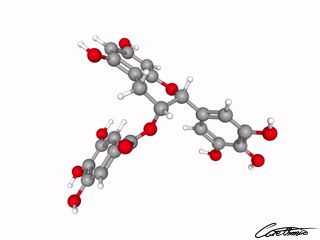Catechins: How To Use Them For Your Benefit
Catechins are one type of phenolic micronutrients, abundant in tea, cocoa, and berries.
They all have antioxidant activity, especially epigallocatechin gallate (EGCG).
Catechins are the largest group of bioactive compounds in green tea.
Tip! Use the "Show Expanded TOC" button if you want to jump straight to a specific article.
Table of Contents
Sources Of Catechins
Catechins are found in a variety of sources, like herbs, fruits, vegetables, beverages, algae, and confectionary items.
Benefits Of Catechins
Catechins can act as an antioxidant ◳. Best together with vitamins C and E and other antioxidant enzymes.
Among the catechins, epigallocatechin gallate is the most-effective antioxidant.
Catechins of green tea have shown neuroprotective effects ◳ by multiple mechanisms at the molecular level.
All Our Articles About Different Catechins
Below you'll find all our articles about different kinds of catechins.
Epigallocatechin gallate

Epigallocatechin gallate is also known as epigallocatechin-3-gallate (EGCG). You can find more information on this nutrient in our article: What Is Epigallocatechin 3 Gallate & What Foods Can I Find It In?
EGCG is the most abundant and powerful antioxidant in green tea. It has been shown to work in cancer chemoprevention.
It even seems to have multiple beneficial effects on vascularity, bone regeneration, and the central nervous system.
Research has also shown that excessive intake of EGCG may cause liver toxicity, could increase the risk of liver damage.
Learn more about epigallocatechin gallates benefits and side-effect in our article: Epigallocatechin gallate: 3 Research-Backed Benefits & One Side-Effect
